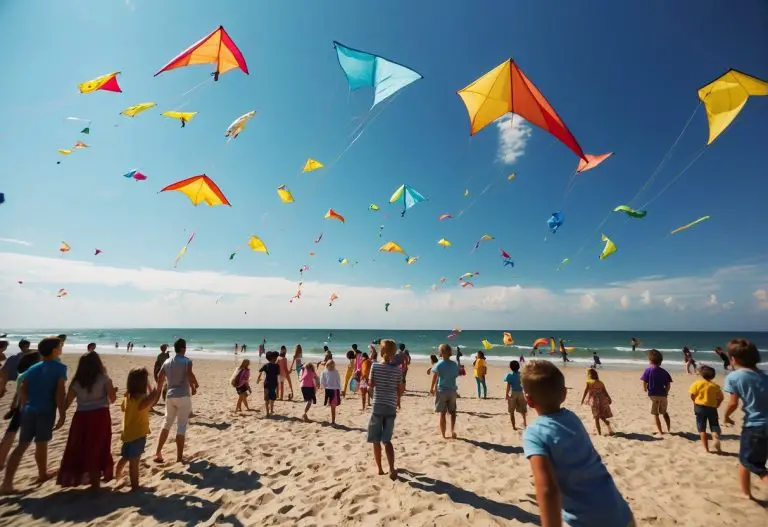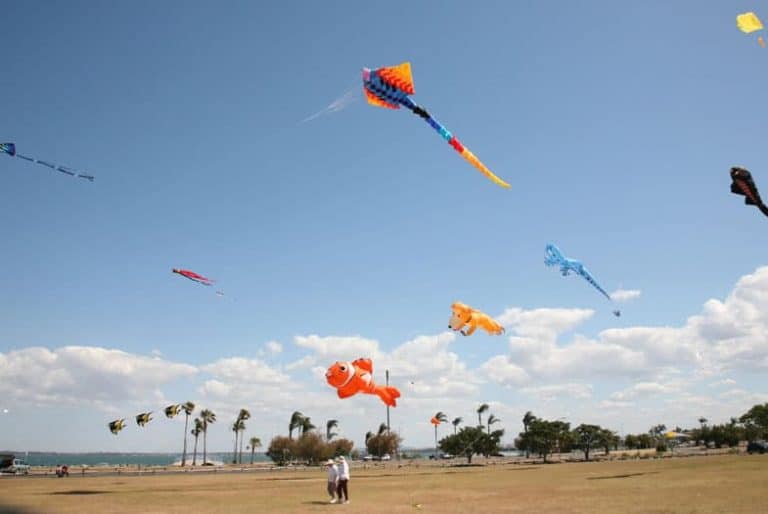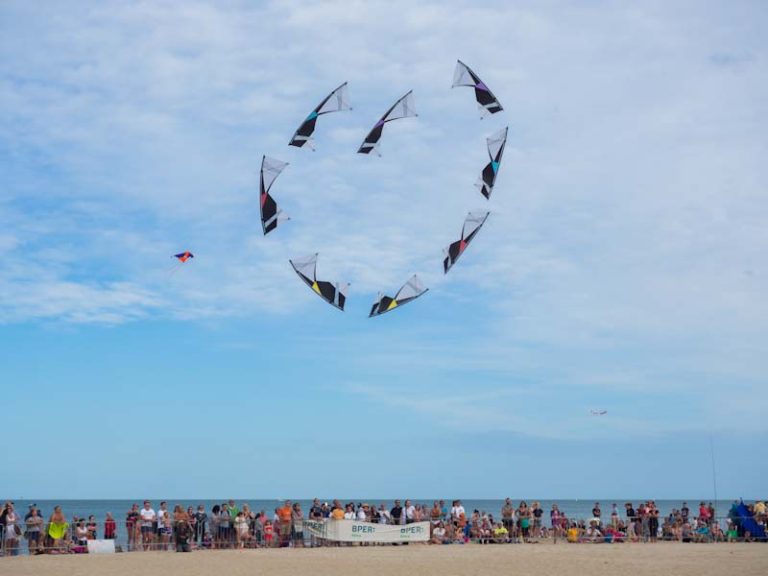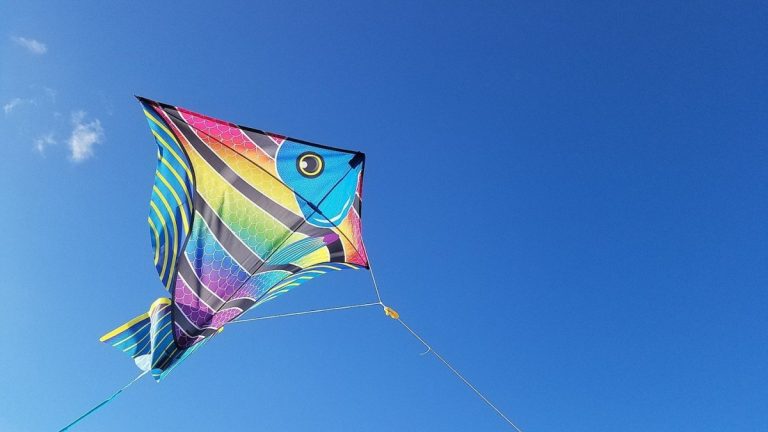Is Kite Flying Good Exercise?
Flying a kite does not sound like exercise; it sounds like fun. And that is the beauty of kite flying. It exercises your physical body and improves your sensory-motor skills. Kite flying involves a lot of running and steering with both your arms and legs. The type of kite that you fly will dictate the level of exercise. In this article, we will look at why kite flying is such good exercise.
Kite flying is an excellent physical exercise for your body, improving your hand-eye coordination, helping develop your cross-motor skills, enhancing your peripheral awareness, and helping with the mental side of your being. All-in-all kite flying is an excellent workout physically as well as mentally.
This article will discuss all the advantages when flying a kite. Be it physical, sensory, coordination, and all the added benefits of getting into the sun and having fun. Kite flying is also a fun way to keep your children active and outdoors.
Why Is Kite Flying A Good Exercise?
If you are looking for an outdoor exercise to introduce to your children, kite flying might be what you are looking for. Getting your children away from their mobile screens and outdoors is no easy feat in today’s modern world. According to the Department of Health and Human Services, children over the age of 6 years old should participate in at least one hour of physical activity per day. Here is why kite flying is such good exercise:
Physical Exercise
Kite flying produces a good level of physical exercise. Firstly, you have to walk to the section of the beach or park that is open for you to fly your kite. Getting your kite in the air will often require you to run along the kite to get it to fly into the air. When you have proceeded to get it flying, you have to control the kite with your hands and arms, making sure to keep it flying in the air.
Upper Body
The simple act of looking up at your kite flying in the sky will help stretch your spine, neck and shoulder muscles, counteracting some of the adverse effects of sitting at a desk all day. Flying a kite promotes flexibility.
When you fly a power kite, it gives your arms and shoulders a tremendous workout, seeing that these types of kites can reach speeds up to 50 mph.
Improved Eye Health
Seeing that most of our eyes are glued to some screen for most of the day, it is imperative to give our eyes a break. Looking into the blue sky is healthy for our eyes, and following our kite as it flies up high in the sky will increase the strength of your eyes and generally improve your overall vision. Watching kites will help your eye muscles engage, regulate the muscles and help to alleviate any fatigue of the eyes.
Core Muscles
Exercising your core muscles will start to happen when you take your kiting to the next level. Kitesurfing is a power kite sport where you are attached to a type of kite surfing board and the kite. It allows you to be pulled into the air, flying for significant periods, before hitting the water and surfing until your next liftoff.
When you get involved in the sport of kite surfing, you will naturally be exercising the following muscles:
- Abdominal muscles
- Lower back muscles
- Deep core muscles (Transverses abdominis and multifidus)
- Leg muscles (Quads, hamstrings, and calves)
These muscles strongly engage when you are carving upwind, pulling hard into your harness, creating great tension in your lines by pushing your board away from your kite.
Hand-Eye Coordination
Hand-eye coordination is the ability of the eyes to tell your hands what to do. We use this ability for a multitude of everyday tasks. The better your hand-eye coordination, the better you will be at small tasks requiring great skill.
When controlling your kite, you will need to slowly release the thread that connects your hand to the kite. This ability to slowly release the line is what we call hand-eye coordination. When you see that you or your child’s kite flying ability has improved to such a degree, upgrade the kite to one that has two strings.
Two-string kites must be handled by both hands and allow for tricks such as spins and loops to be performed. They will require an even greater level of hand-eye coordination which will enhance this skill.
Gross Motor Skills
Gross motor skills require significant movements that generate a lot of power by using our limbs. Controlling these big explosive movements is key to utilizing our gross-motor skills effectively.
When you fly a kite, you need to get it in the air to fly. Running as fast as you can as you try to generate enough updraft for your kite to fly is a form of gross motor skills. You run at your fastest while still controlling your body from tripping or running into something at full speed, and still getting the kite in the air is a sign of you using your gross motor skills!
Enhancing Peripheral Awareness
Peripheral awareness is the ability to see an action or objects that are not in your direct line of vision. Instead, they take place to the sides and outskirts of your field of vision.
When you are flying a kite, you need to be aware of the kites flying around yours, be mindful of other people sharing the space around you, and be aware of any obstacles that might trip you up! By flying a kite, you are, without noticing it, enhancing your peripheral vision each time.
Reduced Stress And Anxiety Levels
Kite flying has a way of regenerating your energy levels by reducing the stress and anxiety of everyday life. When watching your kite fly across an open blue sky, it tends to focus the mind on the moment and not on the daily stress of human life. It relaxes your mind and diminishes anxiety levels, temporarily letting go of today’s headaches and tomorrow’s deadlines!
Connecting With Mother Nature
Connecting to nature has a healing effect on most of us, and the more time we spend connected to the wind, earth, and sea, the better off we are mentally and spiritually. Spending time in nature is an excellent way to counter depression and feelings of despair.
Several studies have shown that working out in nature leaves us with increased energy, less depression, and fewer feelings of anger. Indulging in our favorite outdoor activity makes us feel exhilarated, calm, relaxed, and restored.
Time spent in nature is associated with decreased:
- Blood pressure
- Sympathetic nerve activity
- Heart rate
Mindfulness
Kite flying forces you to be mindful of your current surroundings. Fostering the acute awareness of the here and the now has many proven health benefits, including improved pain management, decreased anxiety and depression. Being mindful and in a conscious state for longer enhances areas in the brain that involves memory, learning, and emotion.
Self-Expression And Creativity
Whether you purchase or make your kite by hand, it’s a form of personal expression and a form of beauty. Building or creating a kite engages your creative right side of the brain. Using this side of your brain will engage visualization, planning, concentration, problem-solving, and numerous other skills that enhance creativity.
Kite flying develops critical thinking, both in constructing the kite and flying it in ever-changing winds. The proud feeling that you made a kite flying so beautifully in the sky is a feeling of outstanding achievement.
Conclusion
Kite flying is fun, and after reading this article, you know it’s highly beneficial for your physical and mental health. Being in nature has a ton of benefits. One of them is the de-stressing of our mind and improvement of our mental state.
Flying a kite will keep you fit physically and help with mental issues like depression, stress, and anxiety. Overall, it’s a win-win situation for people wanting to get out and spend some time in nature as well as get in some physical activity!







